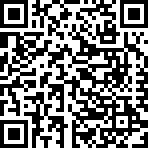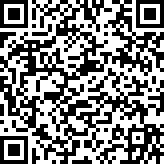 |
Editorial
E-health and Gastroenterology
1 Department of Drug Sciences and Health Products, University of Camerino, Camerino, Italy
2 Italian Ministry of Education, Pesaro, Italy
Address correspondence to:
Paolo Sossai
MD, PhD, AGAF, Department of Drug Sciences and Health Products, University of Camerino, Camerino,
Italy
Message to Corresponding Author
Article ID: 100010G01PS2020
Access full text article on other devices

Access PDF of article on other devices

How to cite this article
Sossai P, Uguccioni S. E-health and Gastroenterology. Edorium J Gastroenterol 2020;7:100010G01PS2020.ABSTRACT
No Abstract
Keywords: e-Health, Gastroenterology, m-Health, Telemedicine
Editorial
Since the end of the 20th century e-health has become an increasingly more popular way of providing health services through the internet [1].
The use of Information and Communication Technologies (ICTs) is, and could be even more so in the future, an important element for health services provided by the Government and/or insurance systems [2].
For patients e-health may constitute as a valid compromise between the treatment of an illness and adequate assistance, especially with regard to adherence to therapy.
The strengths of e-health are: financial savings due to less traveling by patients and physicians, the provision of specialty services even in remote areas, and the ongoing long-distance training of healthcare personnel who would otherwise have great difficulties in obtaining professional updating and training.
The weaknesses are: the need of adequate technological support, an adequate internet network, lack of a direct relationship between the physician/healthcare professional and the patient, and user difficulties by elderly individuals who have reduced or no digital literacy and yet are the ones who would benefit the most from this technological development.
This difficulty may be overcome by using caregivers who are fluent in the use of ICTs. All this leads to the necessity for cultural change among the operators of the sector as well as the patients, as will be shown briefly.
Deriving above all from the financial crisis of 2008, which brought the entire Western world to its knees, the need to reduce healthcare costs is greatly aided by e-health.
The importance of e-health may also be appreciated during epidemics or pandemics caused by highly contagious biological agents, as is currently happening with COVID19 [3].
In order to contain the spread in the event of high contagiousness, e-health is the best approach; allowing for long-distance healthcare assistance while remaining in quarantine at home.
E-health encompasses Telemedicine, which uses ICTs to exchange medical information for clinical and educational purposes, Telehealth which uses ICTs to exchange healthcare information even for administrative purposes, and Telecare which uses ICTs to treat the patient at home predominantly through nursing.
These differences are so artificial that the aforementioned terms are often used interchangeably. Let us consider that Telepharmacy constitutes a separate aspect, mainly dealing with the dispensing of drugs, the control of their intake, and the recording of side effects in nations with a large territory (e.g., USA) and/or with a low level of services [4].
Even with Telepharmacy we can highlight all the contradictions in using ICTs: in economically underdeveloped countries where they would be the most useful, these services lack the IT (Information Technology) network infrastructure, and those who would most benefit from them are not prepared to use them.
Putting aside our hypothetical illustration, let us take for example Africa, where 69% of Africans own a mobile phone while only 19% have access to broadband, therefore ICT is the only means for the few hospital centers to contact the most remote areas but with a network that is unstable and not quite able to support an excessive “load,” such as that of instrumental or radiological exams [5].
The need for cultural change for e-health is emphasized, in Italy, by the data obtained from the Digital Observatory of Health of the School of Management at the University of Milan, which shows that only 12–15% of patients communicate with physicians through digital channels [6].
One of the difficulties with expanding ICTs in healthcare remains the inadequate economic recognition by public healthcare and insurance systems.
Chronic illnesses represent one of the central objectives of e-health because they are constantly increasing as a consequence of the population’s aging, to improve quality of life and healthcare assistance.
The Western economies have a hard time supporting the economic weight of their health care systems, where the gross domestic product (GDP) has inevitably decreased since 2008 and where the pension benefits load is surpassing the production one.
The most developed e-health sectors are radiology and cardiology. Nevertheless, even gastroenterology appeared in the scientific literary scene especially with regard to intestinal inflammatory diseases (IBD) and viral hepatitises and their consequences [7],[8].
To this regard, approximately 354 million people in the world are chronically infected by the B virus and an approximately 180 million by the C virus. These viral forms, if left untreated, culminate in cirrhosis and the latter in cancer [9].
We are talking about two sectors that require a very specialized approach given the complexity and severity of the clinical picture. The therapeutic management and follow-up of symptoms are, in summary, the functions performed through e-health by the Specialist and the Nursing Staff.
With regard to IBDs, they are obtaining increasingly more awareness especially within an extremely productive age range (approximately 20–30 years old), able to only take a few “pit stops” due to both psychological and study/work reasons.
Although not as common, there is a second peak of onset of these diseases at around age 60–70, where the aid of a caregiver who uses ICTs may be helpful for the Physician (Telemedicine), the Pharmacist, for compliance with therapy, as well as for any possible side effects (Telepharmacy).
While the Western world tackles gastroenterological illnesses through a perspective of early diagnosis, adequate follow-ups and therapeutic adherence, the more impoverished world is faced with the lack of economic and specialized means for diagnosing these diseases even before treating them.
An additional aspect of e-health in gastroenterology is endoscopy, which has above all a didactic and diagnostic significance for training personnel in remote sites. These experiences have all been very positive in a large country, such as India [10].
There is little work on the economic assessment of ICTs, however, that which we have available is sometimes contradictory even in relation to the objectives examined.
We believe that if the Western world really wants to help countries that are underdeveloped health care-wise, it should provide adequate internet network coverage as it was prophetically declared in Tunis, in 2005, by the then General Secretary of the UN, Kofi Annan: “Without openness, without the right to seek, receive and impart information and ideas through any media and regardless of frontiers, the information revolution will stall, and the information society we hope to build will be stillborn.”
In this context, the experience of a nonprofit Italian organization proves to be very interesting: “IT senza Frontiere” (IT Specialists Without Borders), founded precisely in 2005, has developed networks across Europe and the world, especially in underdeveloped countries.
This technological transfer would also be positive for more developed countries, since better epidemiological surveillance could be obtained even in light of migration flows that are characterizing current times.
REFERENCES
1.
2.
3.
Li Q, Guan X, Wu P, et al. Early transmission dynamics in Wuhan, China, of novel coronavirus-infected pneumonia. N Engl J Med 2020;382(13):1199–207. [CrossRef]
[Pubmed]

4.
Schneider PJ. Evaluating the impact of telepharmacy. Am J Health Syst Pharm 2013;70(23):2130–5. [CrossRef]
[Pubmed]

7.
Aguas M, Del Hoyo J, Faubel R, Valdivieso B, Nos P. Telemedicine in the treatment of patients with inflammatory bowel disease. [Article in Spanish]. Gastroenterol Hepatol 2017;40(9):641–7. [CrossRef]
[Pubmed]

8.
Yoo ER, Perumpail RB, Cholankeril G, Jayasekera CR, Ahmed A. The role of e-health in optimizing task-shifting in the delivery of antiviral therapy for chronic hepatitis C. Telemed J E Health 2017;23(10):870–3. [CrossRef]
[Pubmed]

9.
El-Serag HB. Epidemiology of viral hepatitis and hepatocellular carcinoma. Gastroenterology 2012;142(6):1264–73.e1. [CrossRef]
[Pubmed]

10.
Talukdar R, Reddy DN. Making endoscopy mobile: The journey. Dig Endosc 2012;24 Suppl 1:172–4. [CrossRef]
[Pubmed]

SUPPORTING INFORMATION
Author Contributions
Paolo Sossai - Conception of the work, Design of the work, Acquisition of data, Analysis of data, Revising the work critically for important intellectual content, Final approval of the version to be published, Agree to be accountable for all aspects of the work in ensuring that questions related to the accuracy or integrity of any part of the work are appropriately investigated and resolved.
Silvia Uguccioni - Acquisition of data, Drafting the work, Final approval of the version to be published, Agree to be accountable for all aspects of the work in ensuring that questions related to the accuracy or integrity of any part of the work are appropriately investigated and resolved.
Guaranter of SubmissionThe corresponding author is the guarantor of submission.
Source of SupportNone
Consent StatementWritten informed consent was obtained from the patient for publication of this article.
Data AvailabilityAll relevant data are within the paper and its Supporting Information files.
Conflict of InterestAuthors declare no conflict of interest.
Copyright© 2020 Paolo Sossai et al. This article is distributed under the terms of Creative Commons Attribution License which permits unrestricted use, distribution and reproduction in any medium provided the original author(s) and original publisher are properly credited. Please see the copyright policy on the journal website for more information.



